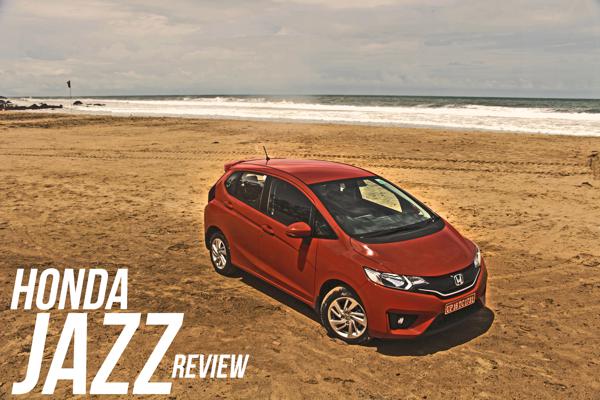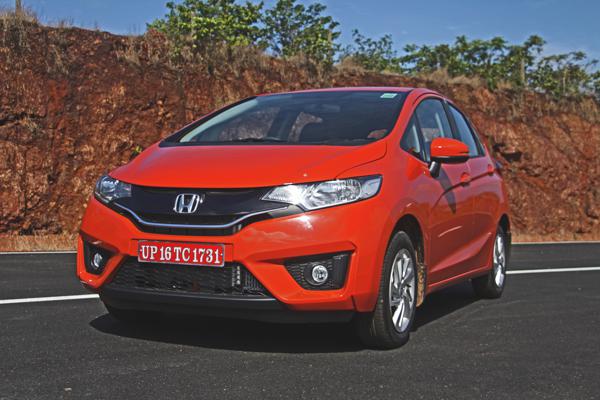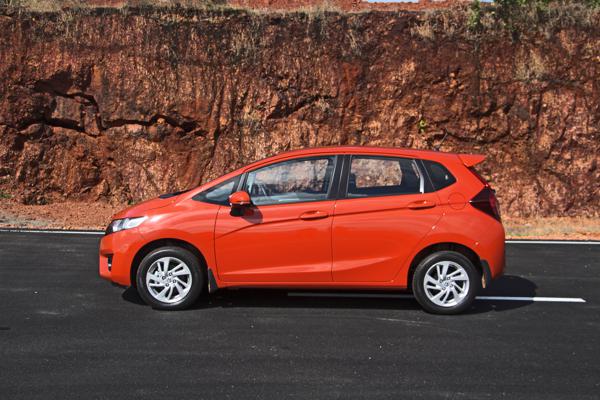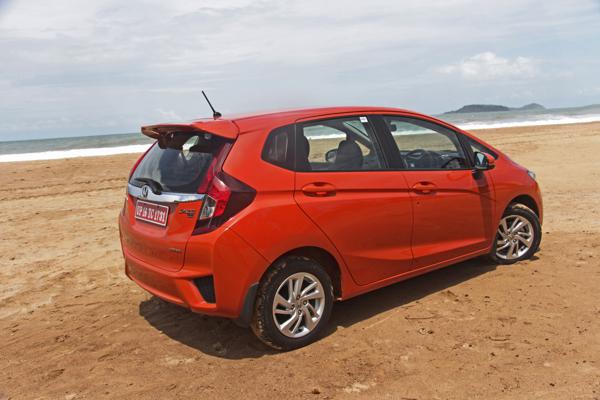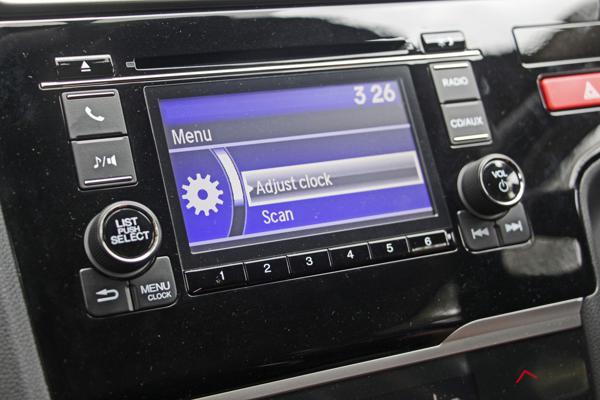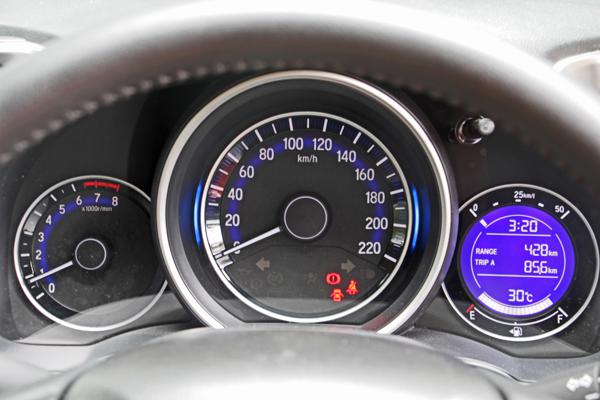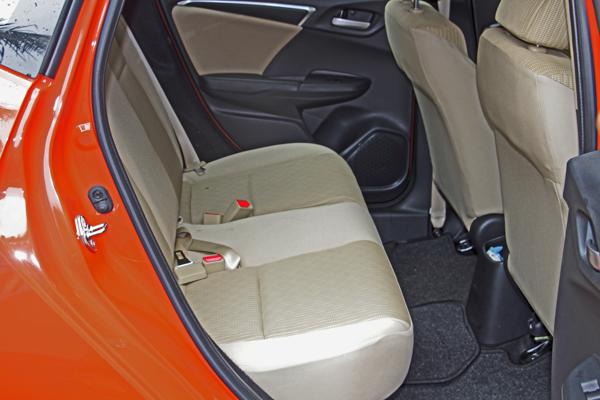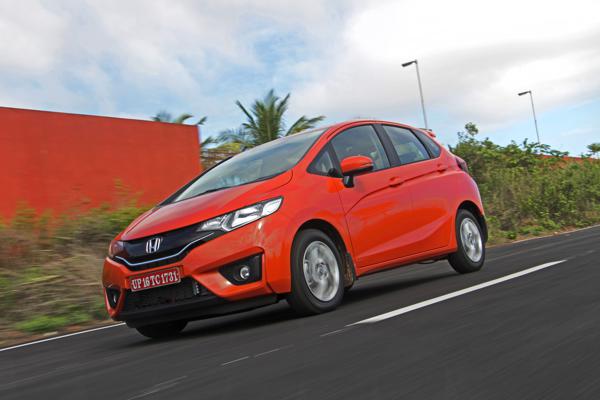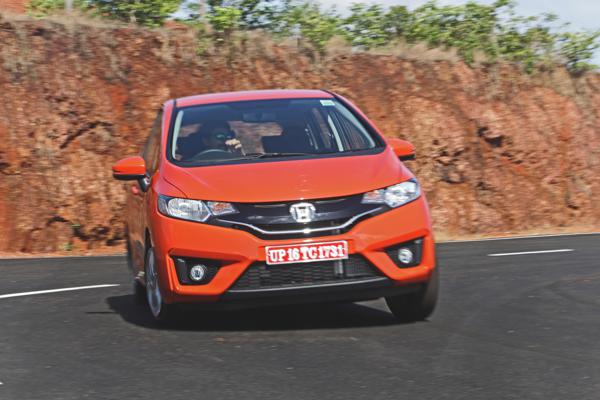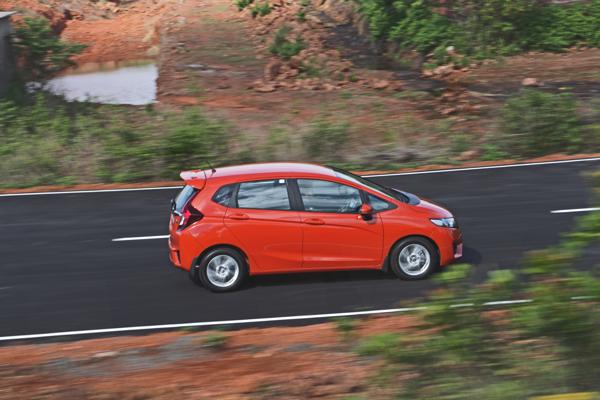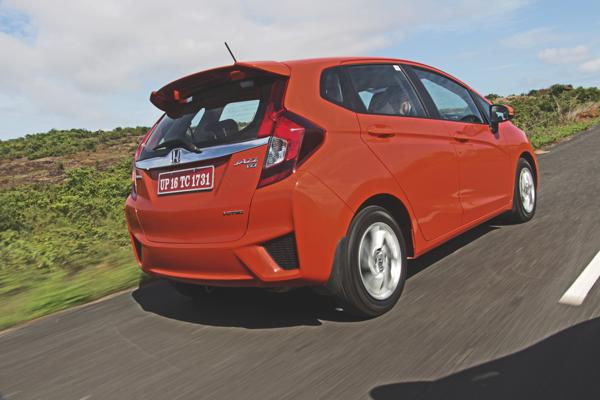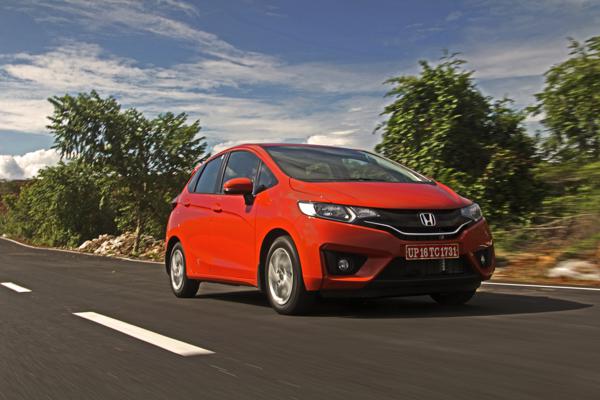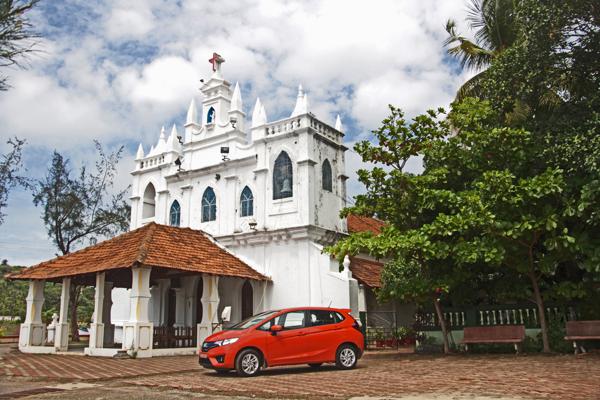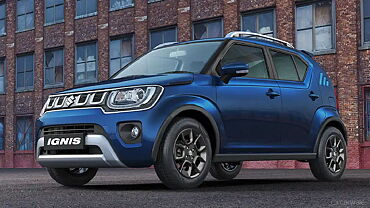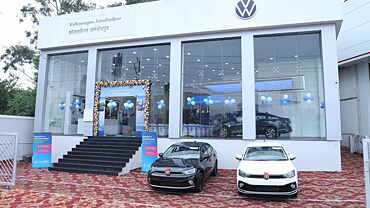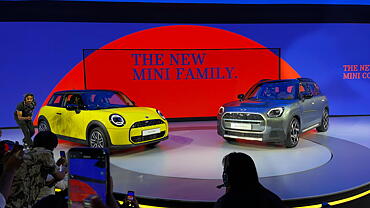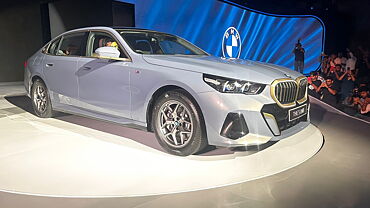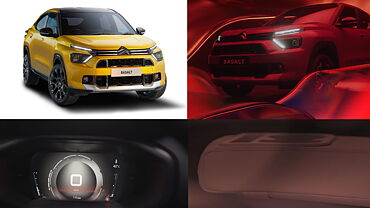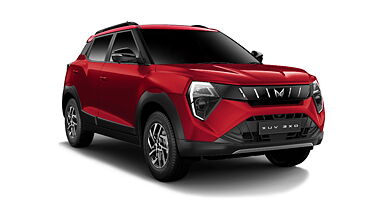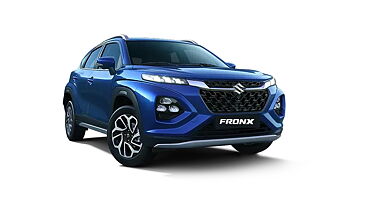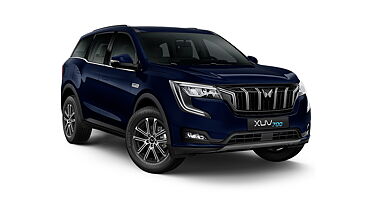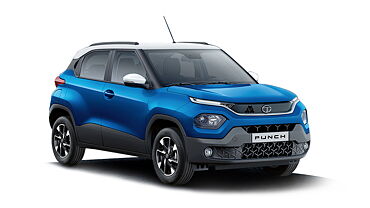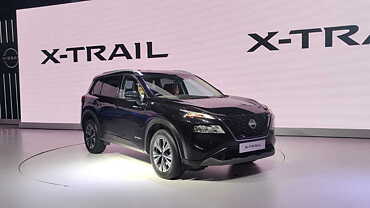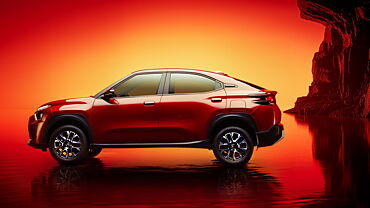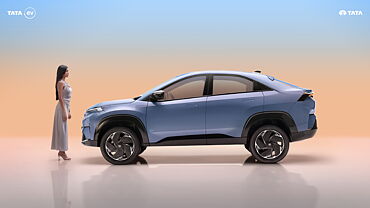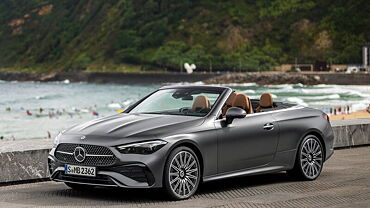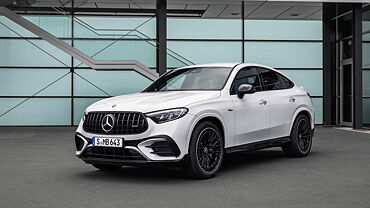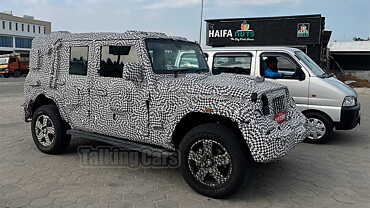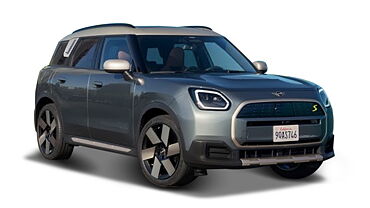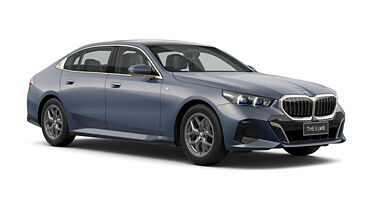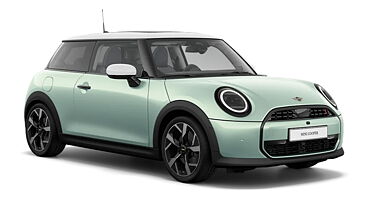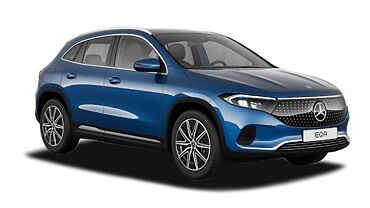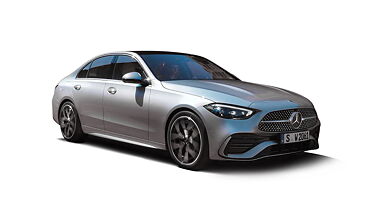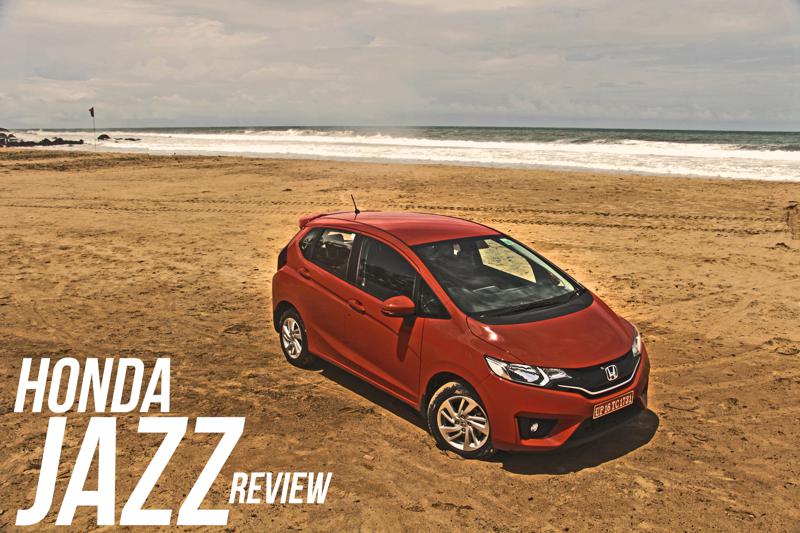
Opening
2015 Honda Jazz First Drive Review
The name ‘Jazz’ brings a lot of nostalgia as this small of a car from Honda coined the very term ‘premium hatchback’. Unlike others, this one didn’t have a conventional design as the slanting hood line with a wide body and a narrow rear pretty much made it a one-of-a-kind in its time.
Presently sold in more than 75 countries with sales of more than 5.5 Mn units, it makes a re-entry in the Indian market to bolster Honda’s position in the small car segment. The all new third generation Jazz gets a lot more than a whiff of an update with a new design on the outside as well as inside along with a new platform to support the modern architecture. In addition to the petrol powertrain, there is a diesel in the offering too with a claimed fuel efficiency of 27.3kmpl!!!
To experience it, what better place than Goa, famous for rhythmically moving palm trees, lustrous white sand and transparent water. Our first impression on the all new Jazz is here.
Appearance Exterior
The earlier Jazz was such a looker as it had all the right elements in the right proportion. Even now, the previous design doesn’t look dated and scores impressively compared to others in the same range. It simply looked as if designed with patience but the same can’t be said about the new gen.
The new one instead is more geeky and futuristic with lines directly lifted from the concept. It might intend to look like a daily commute but at the same time has serious potential to resemble a mean super hot hatch. A single piece front with a short hood profile and a mono rear shape with an elevated roof integrated spoiler needs something as trivial as dark matte alloy wheels, side skirts and a pair of sporty exhaust to bring out its racing side.
Without getting too carried away and focussing on the present, it gets slender headlights flowing in line with a mono style radiator grille. This piano black grille connects the headlights and also houses the turn indicators. The Honda logo sits firm on it. There is a subtle chrome highlight which flows underneath the radiator grille. There is more muscle on the front bumpers with a strong scoop for fog lamps.
If seen along the length, it looks more compact than before which is just an illusion as the new Jazz is longer by 55mm. The wheelbase too has been lengthened by 30mm. The intention to alter its dimensions was to add more room inside the cabin; to make the occupants feel more comfortable. The width and height of the New Jazz remains same as before.
The short hood line with a small front overhang gives it a sharp look. To give more character to the side, there is a wedge line rising along the length with a subtly defined lower contour. The roof line, as seen before, doesn’t taper down as it keeps flowing till it meets the integrated roof spoiler. To make it look equally sporty, there are new tornado inspired 15” alloy wheels running on 175 / 65 R15 tyres, which had looked nicer if were wider.
The wedge line running on the side reaches the rear section and extends into the new combination LED tail lamps. The roof spoiler is the best feature in terms of aesthetics with a wide rear windshield. There is a chunky chrome band under the screen highlighting the brand logo. The rear bumper too gets scoops with a closed wire mesh.
Appearance Interior
The New Jazz is a hatch for sure but it doesn’t come with typical demerits of one. You won’t feel suffocated in it as Honda has added more length and wheelbase only to add more room and make the occupants feel at ease on both short commutes and long trips.
Honda cars have always been offered with premium quality interiors and the new Jazz is no different. Taking generous inspiration from its elder sibling, the steering wheel and instrumental cluster feel more modern than earlier. The three eye meter gets an analogue tachometer, speedometer and an information screen displaying fuel consumption, average and distance to empty. The brand new steering wheel has controls only to operate the infotainment screen.
The top of the spec petrol V variant sports a 5 inch LCD screen, which features Bluetooth telephony and other entertainment options like iPod, USB and Aux-in connectivity. The same screen also acts as reverse camera with three views namely wide, normal and top down display making it easy to park in rough conditions. The VX variant gets a bigger 6.2 inch touchscreen unit with Audio Visual Navigation system as standard. Similar to the City, it gets an advanced AC control unit which works via touch.
Customers can avail two interior trims, dual tone and all black. Both the petrol and diesel high end variants are offered with an all black interiors with one thing in common among all variants and that is fit and finish, which is rock solid. The plastics used on the dashboard and door trims aren’t visually the best but in terms of durability, they are.
Large doors at front and rear have eased up the egress and ingress for even taller passengers. One need not crawl on his knees to enter the cabin and the same applies while exiting. The extension of wheelbase, reducing the travel of rear suspensions and relocation of fuel tank has indeed helped the knees, elbows and shoulders of all occupants to have a better breather of a space.
One segment first feature contributing greatly to convenience is ‘Magic Seats’. Taking care of mundane needs of hauling cargo of odd shapes, sizes and proportions, the rear seats can be arranged in four different modes such as Utility Mode, Tall Mode, Long Mode and the refresh mode. This can help accommodate a cooking gas cylinder, a bike, a chair and many other things. It is also useful to recline seats and make it the best place to sit inside.
The seats are as comfortable as much as convenient. The flattish rear seats miss on under thigh support which can be a bit of bother on long journeys. In terms of pure space, the headroom, legroom and kneeroom have been taken care of by an increase of 139L in passenger volume. In case you wish to know specifically how much, the front shoulder room is up by 35mm, rear tandem distance by 80mm, knee clearance by 65mm and rear legroom by 115mm.
Pack in whatever you wish to as the cargo space inside the New Jazz is 354L, much above its nearest rival the Hyundai Elite i20. If you aren’t satisfied with that, fold down the 2nd row seat to free up 881 litres of boot space. The door pockets can easily hold a litre class container each. There are a total of 9 cup holders. All of which makes it a great daily car with oodles of practicality.
Performance Drive
If you have driven the previous gen, it won’t need much convincing for you to know that this new geeky looking sporty feeling Honda is as good as and also better than before. It won’t be exaggerating to state that the New Jazz is the best handler compared to any other Honda car sold in India.
The pack of lines and flowing shapes on the outside have reduced the resistance and made it more aerodynamic than before. In the inside, the driver’s position gives a fair idea of the oncoming things, thanks to the wide front screen and a shallow hood position. The driver seat also gets a height adjustment, just in case you wish to rise and get a better look of the surroundings.
Under the hood, it gets the cat purr like silent i-VTEC petrol engine, also seen earlier, which has been refined further with efficiency in focus. Shall elaborate more on this later as the most important headlines making addition in the new Jazz has to be its diesel motor. Sharing its architecture and almost everything else with that in City and Amaze, the i-DTEC engine has been refined further, as claimed by the officials. Another vital piece of info is that the New Jazz is available in diesel only in India and nowhere else making it an India only variant.
Unlike the Elite i20, it doesn’t get cranked up by a touch of a finger as it has to be keyed in. Yup! There is no push Start/Stop, wonder if that can be a deterrent aspect. Once the motor is cranked and running, it is noticeably audible, not to the levels of Amaze, and continues to be at higher decibels at lower engine speeds. The coarse exhaust note increases as it crosses 1700 rpm – 1800 rpm on 1st gear, wherein it builds momentum.
The narrow roads of Goa with a decent amount of traffic flowing all over compel often gear shifts to keep the motor revving. Impressively, the i-DTEC has a strong low range torque output making it convenient to haul anywhere with great ease, the only condition being the motor is kept afloat around the 2000 rpm mark. Once the revs build stronger as it enters midrange, the engine noise drops and the unit feels very confident.
In terms of specs, the 1498cc diesel motor makes 100PS of power and generates 200Nm of torque and comes equipped with a 6-speed manual transmission. The higher torque rating of the motor makes it ideal for highways and long distance commutes. Also, the sticky shift quality of the manual transmission especially while driving inside the city gets shadowed at higher revs.
The only best way to drive in the by lanes and manoeuvre city traffic is to do it using the i-VTEC petrol engine, which is Honda’s prized arsenal against any other gasoline engine. It is the best petrol unit to drive, and till date, very few manufacturers have developed a petrol unit as impressive as this.
With a displacement of 1198cc, this unit makes 90PS of power and generates 110Nm of torque. The engine comes mated with a 5-speed manual transmission. The similarity with the earlier model ends here. Sighting the popularity of AT variants in competing models, the new Jazz is also offered with a CVT automatic transmission. It also gets paddle shifters, to make it more engaging.
It is pure music, when the pushed harder, as the valves work over time to create a sporty note and is at its best when at peak. It feels nimble at low range, one does miss the heavier torque of the diesel, but the petrol motor is very peppy. It is also easier to steer as the light weight steering wheel does a great job of turning the nose as and when required.
The manual transmission is super quick and obediently shifts to higher or lower gears making it ideal for city conditions. Drive it fast and enter corners, even at the smack of a turn, it feels very much in control with a negligible roll. Downshift and toss the revs higher to make it exit the turn, it does the same without any drama. The only slight of an issue are the tyres, which do not grab the tarmac strongly with its lower grip. About the CVT, we couldn’t get to drive it in Goa but be rest assured as we will feature it in our upcoming reviews.
Tech Specs
| Technical Specifications | ||
| Make | Honda | |
| Model | Jazz | |
| Variant | V | VX |
| Fuel | Petrol | Diesel |
| Engine Capacity | 1198 | 1498 |
| Power in PS/RPM | 90 / 6000 | 100 / 3600 |
| Torque in Nm/RPM | 110 / 4800 | 200 / 1750 |
| Gears | 5 - MT, CVT | 6 - MT |
| Length mm | 3955 | - |
| Width mm | 1694 | - |
| Height mm | 1544 | - |
| Wheel base mm | 2530 | - |
| Kerb Weight in Kg | 1007 ~ 1044 - MT | - |
| Ground clearance mm | 165 | - |
| Fuel tank capacity L | 40 | - |
| Tyre Spec | 175 / 65 R15 | - |
Features
| Features | V |
| Alloy wheels | Yes |
| Front Fog Lamp | Yes |
| Advanced integrated Audio | Yes |
| Seat Fabric | Yes |
| Steering mounted Audio control | Yes |
| Power door lock | Yes |
| Power windows front and rear | Yes |
| Headlight height adjuster | Yes |
| Dual front SRS Airbag | Yes |
| ABS with Brake asst | Yes |
| Rear window De Fogger | Yes |
| Magic Seats | Yes |
| Climate Control Automatic | Yes |
| Tilt steering column | Yes |
Competition All Specs
| Specifications |
Honda
Jazz |
Maruti Suzuki
Swift |
Hyundai
Elite i20 |
| Variant | V | ZXI | Sportz 1.2 |
| Fuel | Petrol | Petrol | Petrol |
| Engine Capacity | 1198 | 1197 | 1197 |
| Power in PS/RPM | 90 / 6000 | 83 / 6000 | 82 / 6000 |
| Torque in Nm/RPM | 110 / 4800 | 114 / 4000 | 115 / 4000 |
| Gears | 5 - MT, CVT | 5 / MT | 5 / MT |
| Length mm | 3955 | 3850 | 3985 |
| Width mm | 1694 | 1695 | 1734 |
| Height mm | 1544 | 1530 | 1505 |
| Wheel base mm | 2530 | 2430 | 2570 |
| Kerb Weight in Kg | 1007 ~ 1044 - MT | 965 | NA |
| Ground clearance mm | 165 | 170 | 170 |
| Fuel tank capacity L | 40 | 42 | 45 |
| Tyre Spec | 175/65 R15 | 185 / 65 R15 | 185 / 70 R14 |
Conclusion
It is a complete no brainer to assume and know that Honda wants to pitch the New Jazz against the likes of Hyundai Elite i20, Volkswagen Polo and Maruti Suzuki Swift. For a long time, the Japanese car major didn’t have a presence in the premium hatch segment except for the Brio which was not an apple to apple rival against the competition.
This time around, Honda looks better equipped to take on the competition. The efficiency figures are 18.7 kmpl for the manual petrol variant and 19 kmpl for the CVT while the diesel delivers a jaw dropping 27.3 kmpl, second to India’s most fuel efficient car Maruti Suzuki Celerio. It is truly commendable for Honda to have achieved such figures considering it has a larger displacement.
One more aspect where the Honda Jazz scores more is its amazing practicality making it a highly convenient way of travelling around. In addition to first time buyers, it will also attract premium customers looking for a second car in the family. The Jazz has always worked as an aspirational car with the affluent class. The only issue with the earlier offering was its enthusiastic pricing. We hope Honda improves on it with the launch of New Jazz.
